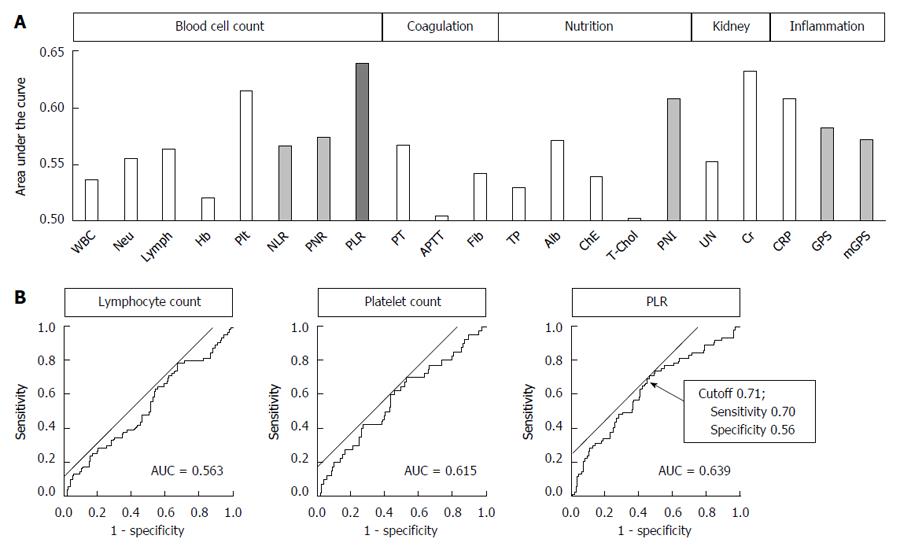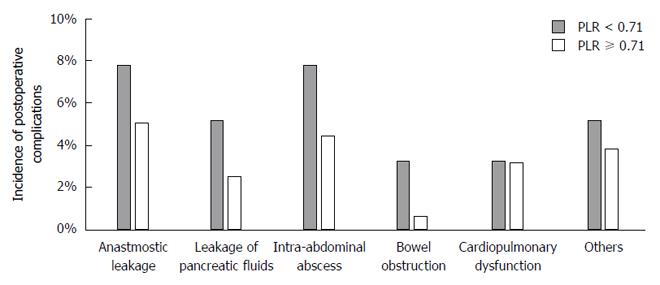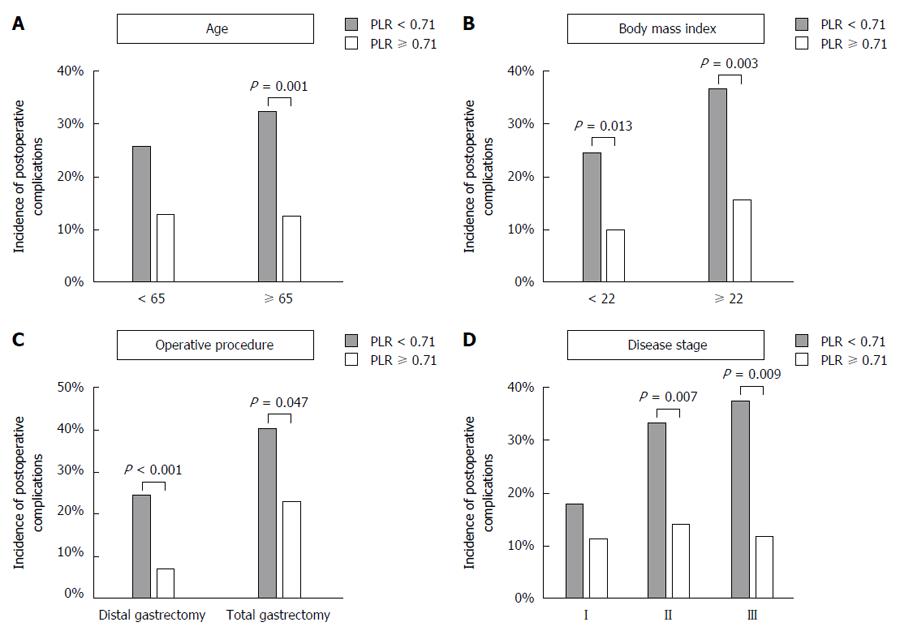Copyright
©The Author(s) 2017.
World J Gastroenterol. Apr 14, 2017; 23(14): 2519-2526
Published online Apr 14, 2017. doi: 10.3748/wjg.v23.i14.2519
Published online Apr 14, 2017. doi: 10.3748/wjg.v23.i14.2519
Figure 1 Comparison of the predictive value of potential indicators.
A: Area under the curve values of potential predictors; B: Predictive values of lymphocyte count, platelet count and PLR for postoperative complications evaluated by receiver operating characteristic curve analysis. PLR: Platelet-lymphocyte ratio.
Figure 2 Comparison of the prevalence of each complication type between the high and low platelet-lymphocyte ratio groups.
Figure 3 Subgroup analyses.
The morbidity rates were compared between the high and low PLR groups according to age (A), body mass index (B), operative procedure (C) and clinical disease stage (D). Comparison of predictive value of potential indicators. PLR: Platelet-lymphocyte ratio.
- Citation: Inaoka K, Kanda M, Uda H, Tanaka Y, Tanaka C, Kobayashi D, Takami H, Iwata N, Hayashi M, Niwa Y, Yamada S, Fujii T, Sugimoto H, Murotani K, Fujiwara M, Kodera Y. Clinical utility of the platelet-lymphocyte ratio as a predictor of postoperative complications after radical gastrectomy for clinical T2-4 gastric cancer. World J Gastroenterol 2017; 23(14): 2519-2526
- URL: https://www.wjgnet.com/1007-9327/full/v23/i14/2519.htm
- DOI: https://dx.doi.org/10.3748/wjg.v23.i14.2519















